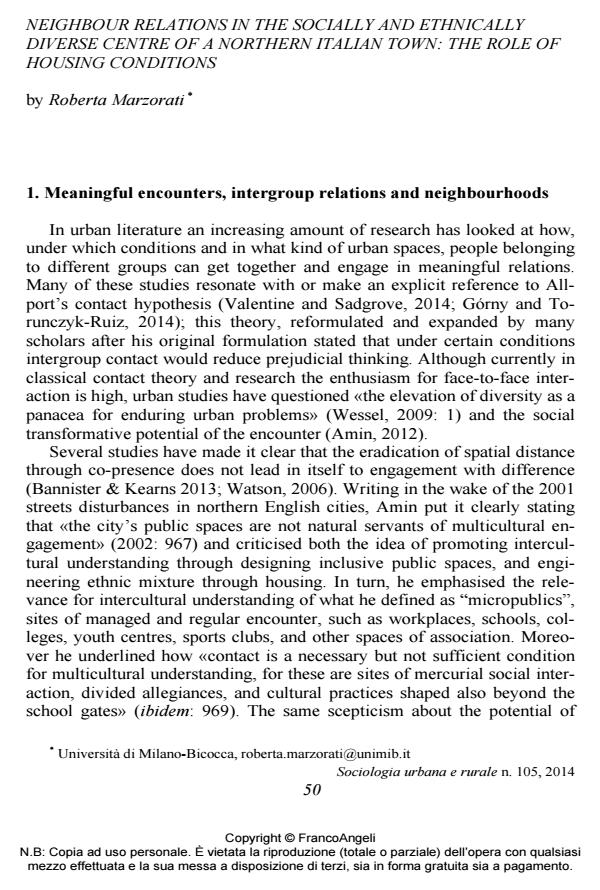Neighbour Relations In The Socially And Ethnically Diverse Centre Of A Northern Italian Town: The Role Of Housing Conditions
Titolo Rivista SOCIOLOGIA URBANA E RURALE
Autori/Curatori Roberta Marzorati
Anno di pubblicazione 2014 Fascicolo 2014/105
Lingua Inglese Numero pagine 15 P. 50-64 Dimensione file 205 KB
DOI 10.3280/SUR2014-105004
Il DOI è il codice a barre della proprietà intellettuale: per saperne di più
clicca qui
Qui sotto puoi vedere in anteprima la prima pagina di questo articolo.
Se questo articolo ti interessa, lo puoi acquistare (e scaricare in formato pdf) seguendo le facili indicazioni per acquistare il download credit. Acquista Download Credits per scaricare questo Articolo in formato PDF

FrancoAngeli è membro della Publishers International Linking Association, Inc (PILA)associazione indipendente e non profit per facilitare (attraverso i servizi tecnologici implementati da CrossRef.org) l’accesso degli studiosi ai contenuti digitali nelle pubblicazioni professionali e scientifiche
L’articolo indaga le relazioni fra vicini nel centro della città di Desio, nell’area metropolitana milanese. Due situazioni abitative sono considerate per valutare in che misura la prossimità spaziale può promuovere l’interazione sociale fra gruppi socialmente e culturalmente diversi. Lo studio mostra che le diseguaglianze socio-economiche, relative all’esperienza migratoria e visibili nelle condizioni abitative e nei modi di vivere il vicinato, sono cruciali per comprendere le relazioni sociali locali.
Parole chiave:Quartiere, diversità, incontro, prossimità spaziale, abitazione, migrazione
- La segregazione urbana: una riflessione tra Francia e Italia Roberta Marzorati, in SOCIOLOGIA URBANA E RURALE 116/2018 pp.131
DOI: 10.3280/SUR2018-116009
Roberta Marzorati, Neighbour Relations In The Socially And Ethnically Diverse Centre Of A Northern Italian Town: The Role Of Housing Conditions in "SOCIOLOGIA URBANA E RURALE" 105/2014, pp 50-64, DOI: 10.3280/SUR2014-105004